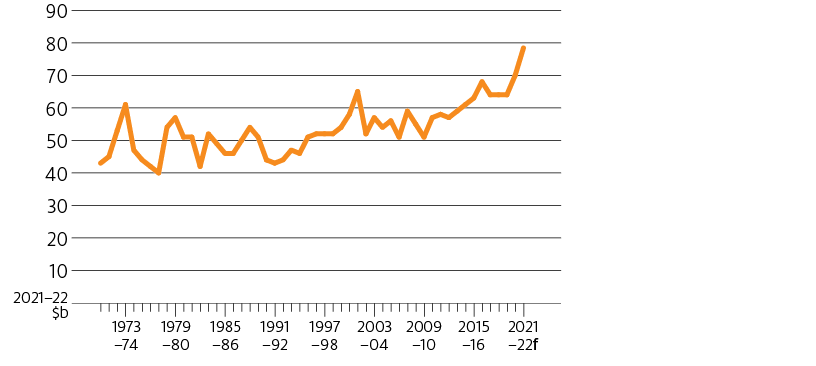In October 2018, the National Farmers’ Federation (NFF) launched the 2030 Roadmap. The ambitious vision was to plot a path for the Australian ag sector to exceed $100 billion in farm gate output within the next decade.
At various conferences and panels sessions, from Toowoomba to Melbourne, I’ve spoken about this report and its seemingly lofty target. Audiences across the food and agricultural sectors have had trouble wrapping their heads around the vast numbers contained in the report. The consensus was that such a large climb was beyond aspirational, let alone achievable.
Let’s look at the projections.
At the time of publishing, the report forecasted $62 billion in output for the 2018-19 financial year. Based on the industry’s current performance, with no intervention or innovation, the report predicted a national output of $84 billion by 2030.
That’s a $16 billion shortfall. Luckily for those in industry, the report listed a strategy which detailed how the NFF proposed to bridge the gap to reach the $100 billion vision in twelve years.
This roadmap centred on five pillars:
- Customers and the Value Chain
- Growing Sustainably
- Unlocking Innovation
- Capable People, Vibrant Communities
- Capital and Risk Management
The target is nothing if not ambitious. Increasing the forecasted $22 billion in growth over 12 years into $38 billion is going to take more than a 5-step plan, regardless of how clear the vision.
For example, it’s broadly agreed that our nation of 25.7 million people are not able to consume this growth in output. Instead, the sector must seek to develop its capacity to value-add. We must manufacture and tailor our natural products and continuously improve the ‘post farm gate’ treatment to produce goods desired by our key export markets. We also must keep a close eye on the competitive international markets that will grow and develop as we do over the next twenty years.
With all of that said, we’re currently three years into the 12-year plan. How are we doing, you might ask? Surprisingly well, actually.
Today, there was a great deal of positive press regarding “unprecedented conditions leading to record value of production”. This has led to “the gross value of Australia’s agricultural production [forecasted] to reach a record $78 billion in 2021–22”.* This a $5.4 billion upgrade on the numbers forecast as recently as September.
With $61 billion of that product destined for export, there is a lot to smile about.
It’s worth noting that while nationally the output grows year on year in the right direction, it’s clear from the ABS and the Department of Agriculture, Water and the Environment data that the scale of the uptick in 2021 is unexpected.

Figure 1.1 Gross value of agricultural production, 1970–71 to 2021–22© Department of Agriculture, Water and the Environment
It’s also worth keeping in mind that global conditions in the last 22 months have been anything but normal. Supply chains are disjointed, interest rates are at record lows and the great recovery is not impacting all markets or consumers consistently.
Although the journey to $100 billion is still a steep climb, this trajectory is reassuring. It does seem that the forecast path based on the plan is not impossible.
That said, we’re not on easy street yet. We have eight years to maintain this trajectory, and that will be anything but straight forward. While the metrics in the NFF’s breakdown on their 5 pillars are well thought-out, the bulk of the value to be created will rest on just a few of these.
Ensuring growth in business maturity, capital investment in the sector and labor availability will be key. The need to innovate must be at the centre of the growth. Innovation in how we farm, how we produce, how we harvest, how we approach sustainability and how we value add will make the difference. While we’re at it, aligning this innovation with new product development targeted at the world’s consumers through careful market research and product market fit.
The world has also taken a very different view of sustainability with a global shift in perspective since 2018. Australia has the ability to address this and add to the value of our opportunity but again a willingness to innovate will be critical. As the updated assessment highlights “Australia’s agriculture sector must establish a new roadmap, with urgency, that helps producers reduce emissions, and embed sustainable and resilient practices in their businesses.”
If we can achieve that, the potential to reach (and exceed) $100 billion by 2030 will be just the beginning.




